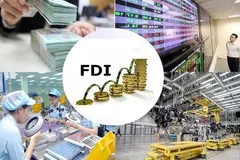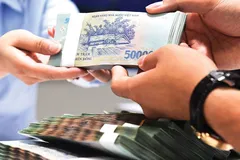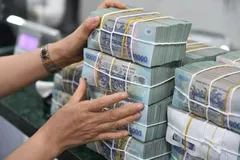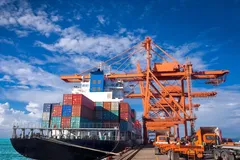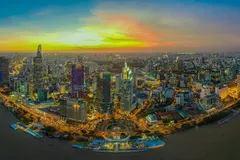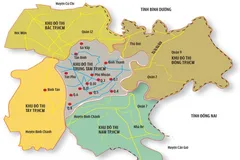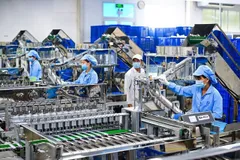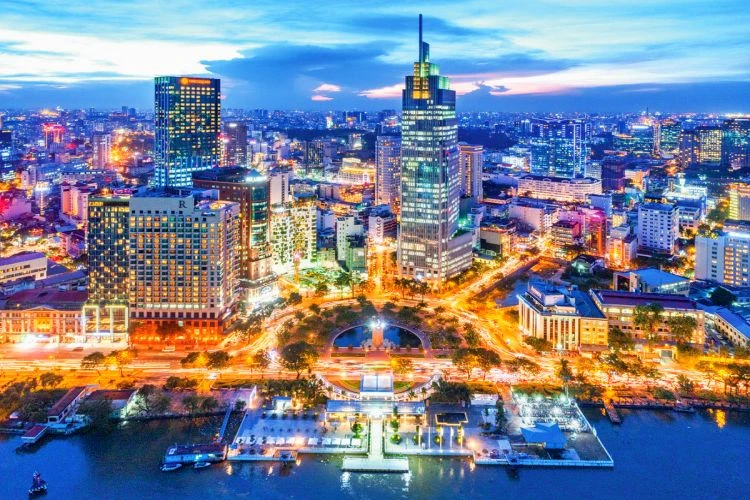
On this significant occasion, Saigon Investment sat down with Dr. Trần Du Lịch, a leading economist, to discuss the city’s strategic role and vision for the future.
JOURNALIST: - Dr. Trần Du Lịch, how would you assess Ho Chi Minh City’s position and role as the economic engine of Vietnam?
Dr. TRẦN DU LỊCH: - Ho Chi Minh City has consistently played a pivotal role in Vietnam’s economy, contributing over 20% of the national GDP, 30% of state budget revenues, and 25% of the country's industrial and commercial output. It also leads the country in attracting foreign direct investment (FDI).
The city is known for its tradition of dynamism and innovation. Even before the “Đổi Mới” (Renovation) era began in 1986, Ho Chi Minh City pioneered many economic models later adopted nationwide. Since 1980, the city’s economic scale has expanded nearly 30-fold, and its urban footprint has grown four times, becoming more modern and livable. This transformation has dramatically improved living standards and set the foundation for the city’s aspiration to become a global metropolis.
However, in the last decade, the city’s contribution to national economic growth and innovation has somewhat declined. Administrative bottlenecks and numerous delayed or suspended projects have led to wasted resources and diminished impact.
That’s why Resolution 31-NQ/TW of the Politburo (issued December 30, 2022), and Decision No. 1711/QD-TTg by the Prime Minister (dated December 31, 2024), outline a bold development plan to 2030 with a vision to 2045 and 2050. The goal is for Ho Chi Minh City to stand shoulder-to-shoulder with the world’s major cities—as a hub for economics, finance, services, and an attractive global destination at the core of the Southern Key Economic Zone.
- Given the target of achieving double-digit growth, how can Ho Chi Minh City fully leverage its advantages?
- The city enjoys a prime geographic location, robust infrastructure, strong economic and technological foundations, and a highly capable labor force. To meet its ambitious goals, Ho Chi Minh City must lead the way in innovating economic governance, building an innovation ecosystem, and transitioning toward a digital and green economy. It is uniquely positioned to lead Vietnam into a new phase of high-quality, sustainable growth.
To achieve this, the city's gross regional domestic product (GRDP) must grow 1.2 to 1.5 times faster than the national average—repeating past performance. From 2026–2030, it should maintain a rate 1.2 times the national average, and from 2031–2035, 1.5 times. In concrete terms, this means an average annual growth rate of 11–12% from 2026–2035, and a steady 9–10% in the decade that follows.
Ho Chi Minh City must also operate under the most market-oriented conditions in the country. It must strengthen its role as a gateway for both domestic commerce and international trade. Key to this will be the development of the Cần Giờ International Transit Port and the International Financial Center—both seen as transformative projects.
- In terms of infrastructure and strategic projects, which initiatives do you believe are most critical to reshaping the city?
- First and foremost, the city must urgently and effectively implement its approved planning for 2021–2030, with a vision to 2050. It should also revise its master plan for 2040, with a vision to 2060—starting as early as 2025. This must be accompanied by detailed project planning and resource allocation mechanisms, along with policies to attract private sector investment under a decentralized governance model.
Priority should be given to unblocking long-stalled projects due to legal or regulatory issues, suspended developments, and underutilized land, to channel idle capital into productive use.
Key infrastructure priorities include completing regional transport networks, expressways, and Ring Roads 3 and 4 (already under development and scheduled from 2024). The city also needs to finish Ring Road 2 by 2025–2026 and develop the North–South traffic axis and the Saigon Riverside road.
Urban rail development is another major priority. Under Resolution 188 of the National Assembly (February 19, 2025), the city aims to complete approximately 355 km of metro lines by 2035. Other key projects include the high-speed railway from Ho Chi Minh City to Cần Thơ, rail links to Cần Giờ and Bà Rịa–Vũng Tàu, and the metro line from Thủ Thiêm to Long Thành International Airport.
The city must also move ahead with repurposing five of its 17 export processing and industrial zones—starting in 2025—based on recent guidance from the City Party Committee. A broader master plan for industrial transformation from 2026 to 2035 is essential to attract new investment waves.
Last but not least, the city should fast-track the development of its International Financial Center, based on the framework approved by the central government. This project will gradually cement its status as a regional and global financial hub.
Historically, Ho Chi Minh City was the destination where entrepreneurs from across the country came to "start a business." In this new era, it must become the city where entrepreneurs from across the region come to "start a global journey."
- Thank you very much for your insights.






